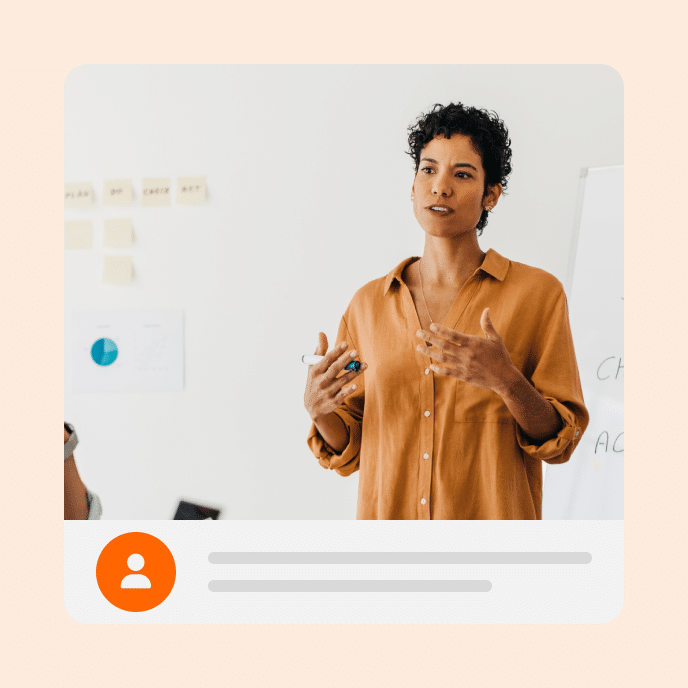5 Ways to Combat the Forgetting Curve
Beat the forgetting curve! Explore five strategies, from spaced learning to job aids, that help learners retain knowledge and apply it with confidence.

Why learning fades and what we can do about it
How many times have you read a fascinating article or sat through a really great training session, only to realize not long after that you’ve forgotten most of the information? It’s a lot more common than you might think. More than a century ago, German psychologist Hermann Ebbinghaus mapped out what we now call the “forgetting curve.” His research revealed an uncomfortable truth: No matter how engaging or well-designed the learning is, without reinforcement, much of it quickly fades from memory.
Today, the forgetting curve has never been more relevant. In classrooms and the workplace, knowledge is only valuable when it’s retained and applied. That’s why popular strategies like spaced learning, just-in-time training, and active recall aren’t just academic concepts. They’re critical tools for helping people learn more effectively, remember material longer, and apply what they learn in real situations.
In this post, we’ll explore five ways you can combat the forgetting curve by understanding and working with it, rather than against it, to create training that leaves an impact.
Key Takeaways
- Memory is a muscle. The more we exercise it with varied reinforcement, the stronger and more reliable it becomes.
- Timing is everything. Delivering information when it’s needed most, instead of all at once, improves recall and confidence.
- Learning lives in layers. Combining methods, from interactive practice to on-the-job aids, creates a web of touchpoints that make knowledge stick.
1. Spaced learning and spaced repetition
What it is and why it works
Remember cramming for a big test the night before? Not only is this decidedly unfun, it also isn’t very effective. You may have done enough to get by, but chances are you forgot most of that material immediately. That’s because our brains don’t hold onto information when it’s dumped in all at once. This is where “spaced learning” comes in. It’s a principle that suggests spreading learning over time to improve retention. When we revisit material at strategic intervals, our brains treat it as more valuable, making it easier to recall later.
Best practices
The best part about spaced repetition is that it’s easily adaptable to different learners and contexts. Here are a few easy techniques you can use:
- Expand intervals. Lengthening the time between study sessions challenges the brain just enough to strengthen memory without overwhelming it.
- Use simple systems. Techniques like the Leitner system use flashcards sorted by difficulty to keep learners focused on what they need to learn the most.
- Trickle in reminders. Introduce short recaps or refresher sessions into the workflow instead of frontloading them all at once.
Tools and techniques
Tools like Anki and Quizlet employ the use of spaced repetition in education, and now the concept has carried over into workplace learning platforms. Even microlearning apps and LMS features are beginning to bake in spaced delivery so that knowledge resurfaces just when the learners are most likely to forget it. But the tool isn’t the easy solution. The key is using technology thoughtfully to help people engage with content over time rather than in one overwhelming spurt.
2. Retrieval practice and booster sessions
The science of “use it or lose it”
The brain is like a muscle, and the more we use it, the stronger it gets. “Retrieval practice” operates by the same principle. But instead of simply re-reading or rewatching material, the idea is to actively pull knowledge from the memory. Each time you do, the memory trace strengthens, making it less likely to fade. That’s why booster sessions—quick refreshers that are delivered days or weeks later—are so effective at reinforcing concepts.
Incorporating quizzes and refresher modules
Quizzes aren’t just about testing knowledge. They’re about reinforcing what you learned. Even quick check-ins or knowledge assessments can jog the memory and build confidence. Whether standalone or embedded into other training, refresher modules are a low-pressure way to revisit important ideas before they slip away.
Active recall methods
Active recall doesn’t have to be fancy or complicated. The goal is to give learners an opportunity to pull knowledge from memory rather than just reviewing it. Here are a few approaches you might use:
- Flashcards. There’s a good reason this method is still around. Flashcards push learners to recall information quickly and repeatedly, creating stronger memory connections over time.
- Practice tests. Low-stakes quizzes or mock exams let learners test themselves in a safe environment, emphasizing what they learned and what needs more studying.
- Scenario-based exercises. Applying knowledge to real-world situations, such as case studies or role plays, moves learners beyond memorization and lets them practice in context.
3. Just-in-time (JIT) training and job aids
Definition and advantages
Just-in-time training is about giving people the knowledge they need exactly when they need it. Instead of overwhelming learners with information they might not use right away, JIT offers quick, targeted guidance at the moment of application. For example, a technician might be able to scan a QR code on a piece of equipment to instantly pull up a step-by-step troubleshooting guide. The result is less forgetting, more confidence, and fewer mistakes.
Enhancing relevance and immediate application
Learning is memorable when it feels meaningful. JIT training works because it connects directly to the task at hand, and learners see the immediate payoff of what they’re learning. Relevance not only improves memory but also builds trust that the training supports them in real and practical ways.
Implementation techniques
JIT learning works best when it’s practical and easy to use. Here are a few ways to bring it to life:
- Digital checklists. Quick, mobile-friendly lists guide learners through a process, reducing errors and improving performance.
- Embedded job aids. Pop-ups, tool tips, or reference cards built right into the system or apps give learners support without interrupting their workflow.
- Step-by-step guides. Short videos, diagrams, or microlearning modules demonstrate exactly what learners need to do.
4. Engagement, relevance, and learning culture
Making content relevant and meaningful
Learners retain information better when it directly relates to their goals and challenges. On the other hand, training that feels abstract or disconnected is easy to forget. Case in point: A sales rep who needs to work on handling customer objections will be much more engaged with a role-play scenario based on an actual situation rather than simply reviewing a generic case study.
Interactive and multimedia learning
Engagement matters. Interactive activities, blended content, and even gamification can transform passive learning into active participation. When learners click, discuss, or compete, they’re not just absorbing information. They’re using it. That type of hands-on experience makes learning more memorable.
Fostering a culture of continuous learning
The most effective training programs don’t treat learning as a one-and-done event. They weave it into the workflow. To nurture a culture of continuous learning, it requires leaders to model curiosity, peers to share knowledge, and resources to be readily available.
Here are a few ways to foster this culture:
- Celebrate wins. Recognize employees when they apply new skills on the job.
- Encourage sharing. Create space and opportunities for teams to exchange tips, resources, or lessons learned.
- Keep it visible. Regularly highlight training opportunities and show how they connect to organizational goals.
5. Built-in repetition and flipped classroom models
Built-in recaps and repetition frameworks
Repetition doesn’t have to mean being redundant. There are ways to naturally bake it into your course design. Quick recaps at the start of a new module, summary slides at the end, or short knowledge checks sprinkled throughout help keep concepts fresh. These small reinforcements act like gentle reminders, helping learners retain information long after the first exposure.
Flipped classroom as a reinforcement strategy
In a flipped classroom, learners review material on their own through videos, reading, or microlearning before applying it in group settings. This model works because the repetition is built in. Learners encounter content once during prep and then again during active application. By shifting class or workshop time toward discussion and practice, the flipped approach increases the touchpoints for better retention.
Combining modalities for retention
The most powerful learning experiences don’t rely on a single approach. Instead, they layer multiple methods together. Here are some effective combinations:
- Spaced repetition + microlearning. Deliver small doses of content over time to keep concepts alive.
- Flipped classroom + active recall. Let learners study independently, then use group time for retrieval practice.
- Job aids + engagement strategies. Reinforce learning in the flow of work while keeping it interactive and relevant.
Closing the gap between learning and remembering
Forgetting is natural, but it doesn’t have to be the end of the story. By weaving together these strategies, we can turn short-term exposure into long-term mastery. Remember that learning is a process, not a one-time event. Every recap, quiz, and job aid strengthens the memory and makes it easier to apply what you’ve learned when it really matters. When we design with the forgetting curve in mind, we’re not just improving memory and retention. We’re setting learners up for success that lasts.
Tired of all-at-once training? Check out our blog post, Beyond The Information Dump: Create Engaging Learning, to learn how to design memorable learning experiences.
You may also like

How to Make Compliance Training Fun: Engage Learners for Good
Learn practical, actionable tips to transform compliance training from boring to fun using storytelling, gamification, microlearning, and more engaging strategies.


